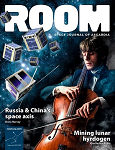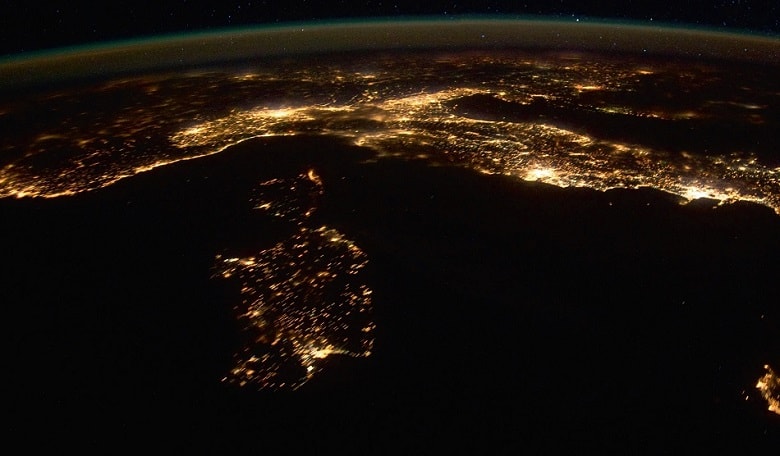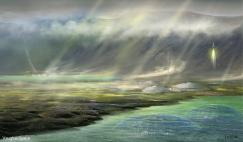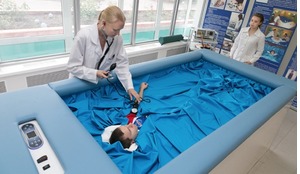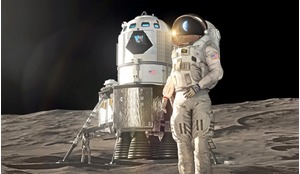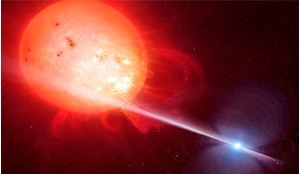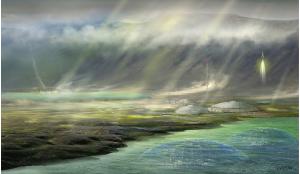Space applications, space technologies and space-based services are omni-present, though often hidden from view from the end user. On the ground, at sea and in the air, they form an essential part of modern everyday life, work and progress. Their gradual and steady integration has made space indispensable, critical and more strategic to modern societies than ever before. As the space sector matures, its value, role and importance is bound to increase, thereby opening up entirely new fields for space infrastructure and the services it can provide.
At the same time, new space programmes are continuously being conceived, prepared and launched, making best use of the latest technologies and opening new application areas not thought of before. This year, European space celebrates its 50th anniversary, marking five decades of cooperation within Europe and beyond to build programmes to enhance knowledge and provide jobs. Within these programmes, many novel applications have been developed and tested, of which some are now commercially or freely available.
Looking towards the future, it is apparent that integrating space even further into modern societies and economies will be essential to achieving many of Europe’s most important policy goals as well as global challenges. Space assets, with their inherently global reach, constitute one of the tools for developing global answers. But integrating them into terrestrial systems poses a number of challenges, linked to the characteristics of space systems and the space sector more widely, and also the way space programmes are traditionally perceived and managed. The sector has faced these challenges since its inception, though they become increasingly important as the role of space systems increases for modern societies.
Successfully addressing these challenges is of prime importance for the European Space Agency’s (ESA) Space for Earth initiative. This wide-ranging programme deals with challenges that involve multiple space contributors from a variety of domains and focuses on areas with identified needs, including contributions from space science, Earth observation (EO), telecommunications, navigation, human space flight, microgravity and launchers. A number of overarching themes have already been identified: energy, oceans, Arctic and the Antarctic, each one linking with and benefiting from a variety of space asset types. This article will focus on the activities within ESA’s Space & Energy (S&E) initiative as a (prime) example of the activities within the Space for Earth initiative.
Over the past decades, the space sector, and ESA in particular, has been contributing both directly and indirectly to the terrestrial energy sector in various domains, ranging from providing data to transferring space technology. However, many of these activities have been on an ad-hoc basis, without an overall thematic approach. Realisation that a more systematic approach could enhance the number of opportunities resulted in the creation of ESA’s S&E initiative, an umbrella programme under which a variety of activities are coordinated, structured and promoted.1,2
With S&E, ESA aims to contribute to the multitude of energy transitions currently taking place within Europe. It is actively promoting and initiating research that intersects both space and terrestrial energy activities. In particular, the specialised knowledge of ESA, in combination with the space industry, is a powerful tool to support European policies aimed at achieving an affordable, secure and sustainable energy system.
The main objective of the S&E initiative has two action lines: develop technologies for the energy transitions – research and development (R&D) focused on the development of energy-related technologies for both space and terrestrial applications, for example, including efficient fuel cells, energy storage, materials, etc; propose and develop energy support services from space – these include, for example, smart grid management, robust communication, high-resolution EO data, etc.
To this aim, two research studies were implemented together with European industry in 2013, providing an initial investigation into each of the above areas.
The first study, performed by Abengoa Hidrogeno, initially focused on the current ESA roadmaps in several technical domains which were compared with multiple relevant terrestrial energy roadmaps with the goal of identifying R&D areas of common interests.3 The main technology domains identified for this first assessment were thermal control, hydrogen production and storage, photovoltaics, energy storage, life support systems, robotics and space weather effects.
Once a list of prospective technologies was formulated, each area was subsequently analysed against a set of criteria in order to narrow down the most promising technologies in this field. Some of the criteria considered were: technology differences and commonalities, future market needs, current and planned R&D budgets and development lead times.
By analysing the roadmaps of the above domains from a terrestrial energy sector point of view, new opportunities could be identified that would link to existing and/or future space needs. These opportunities could potentially benefit not only the space industry, by a ‘spin-in’ of terrestrial applications, but also allow the development of new synergies between terrestrial and space applications that would ultimately see new products or services being developed both for space and terrestrial markets.
The first-phase analysis led to a recommended shortlist of potentially interesting technologies for co-development, including the identification of possible terrestrial industry partners. In addition, a recommendation to update the existing roadmaps for the space technological domains was made to include the expected timeline of relevant synergetic R&D in the terrestrial energy sector. The main technology synergies identified for the domains considered were: loop-heat pipe thermal management; slush hydrogen; novel manufacturing processes for aerogels; modelling of geomagnetic storm environment and its effect on the energy infrastructure.
These topics are now being further analysed on both the space and terrestrial requirements and are set to continue to the next phase in their development.
The success of this activity has led to the next step in which the technological domains under assessment are expanded from the initial set. By expanding the exposure and providing an internal platform for discussion, it is believed that more new concepts can be defined and explored for possible synergies with terrestrial partners
In the second research study initiated in 2013, two parallel studies were commissioned to explore increased synergy between the energy and space sectors and assess how the space sector, and in particular EO programmes, can aid the energy sector with existing and new products. The needs of the energy industry were charted and suitable EO applications were analysed. The studies then focused on developing new EO mission concepts that are able to fulfil current and anticipated demands of the energy sector. A survey of the energy sector, including via a workshop and end-user interviews, was performed to identify the most promising energy sub-sectors and space exploitation possibilities.
Already-available or planned EO products and missions (such as those within the ongoing Copernicus programme and ADM-Aeolus) as well as non-EO approaches (such as ground-based information gathering and aerial surveys) can already address a large part of the energy sector’s needs. On the other hand, insect swarms for instance, which have an impact on biofuel production, can already be monitored from space.
The upcoming Sentinel missions, which are part of the Copernicus programme, will aid in identifying potential sites for solar or wind power generation. However, a fair amount of unmet demand was found to be remaining, which underwent further analysis. In each study, this global analysis led to a shortlist of potential interesting EO concept missions, which would best supplement either existing and/or future planned EO capabilities. Subsequently, the two most feasible EO concept missions were chosen per study for a full cost–benefit analysis, including instrument, platform, launch, ground segment and feasibility assessments.
In the first study, a collaboration formed by NOVELTIS, ENEA and OHB, these concepts were4: WiRM, a wind pencil-beam scatterometer for wind resource assessment and offshore operations; GEM, a greenhouse gas (GHG) mission based on a SWIR spectro-imager to measure emissions of CO2 and CH4 for GHG emission inventory and leak detection.
In the second study, a collaboration formed by CGI and SEA, the concepts chosen from a wide range of user cases were5: HADES, the identification of potential sites for carbon capture and storage (CCS) using a 10 MHz ground-penetrating radar; HiTIR, a high-resolution thermal infrared spectrometer to identify thermal losses from commercial buildings.
A further study, which started in April this year, focuses on the identification of opportunities for satellite communication in a low-carbon society, exploring the opportunities that will open up for space actors following the ongoing changes in the energy sector with a particular focus on the down-stream space applications segment. It includes a cost–benefit assessment, a competitive analysis, and will define for each opportunity the requirements of the main users or customers and suitable system concepts and architectures. Key energy domains concerned include smart grids, wind and solar power.
Strategic partnering
The experiences obtained during the above initial studies have helped to further improve the scope and framework of the S&E initiative. At this stage, the challenges related to the space systems are experienced less in the technology road-mapping branch of the initiative and more on the services branch. On the latter, investment and launch costs in particular influence the feasibility and market studies of the need for new EO services from the energy sector.
Another challenge is that due to the highly specialised nature of the space sector, it has only a limited view and knowledge of the needs and requirements of non-space industries. To explore possible technology synergies from within the space sector will mostly depend on the domain knowledge and insights from technology specialists. To expand this view towards terrestrial industries and markets, space agency support to provide fora, occasions and incentives for discussions between space industry and representatives of the energy sector has been key.
This has been achieved via joint workshops and conferences as well as actively reaching out to the energy sector via dedicated technology-mapping efforts. This offers insights and links to the energy sector that the space industry otherwise would not have. Partnering with strategic key industry players who are in a better position to provide mediation between ESA and the terrestrial sectors is key to expand the activities outreach and helps speed up the process.
The S&E initiative has also faced challenges related to the potential size of the space market compared to the energy market. Although much smaller in magnitude, space, as a relatively niche market, does offer an attractive early market for application testing and development of new terrestrial technologies.
Although overall development times of space and energy system technologies are roughly comparable, the funding environment for the two sectors is substantially different, not only in total size, but also on the involvement and importance of public investment for technology R&D. This has implications and creates difficulties related to intellectual property, competitive advantage, decision mechanisms for R&D funding and industrial policy.
In the space sector, technology development can easily extend beyond 10 years (depending on the initial technology readiness level). Although such timelines also exist in the energy sector, they are rarely in sync with those of space development and so could require constant fine-tuning and evaluation, especially during the critical early phases. Typically, it was observed that both on the system and user level, significant differences exist in the management between space and terrestrial technology developments. The proposed activities therefore need to be highly flexible in nature. This includes areas such as resources, funding, time planning and management. In particular, technologies could be in different stages of development in the terrestrial and space industry. Overall, this requires a continuous process for reviewing and updating existing and future activities within the roadmaps.
A flexible framework
Finally, the long-term view of the space sector may span beyond the time frame of terrestrial activities. Ideas would therefore require long-term nurturing during which the global scope and strategy of both industry and space may change. Therefore, sufficient flexibility in the strategy and framework is needed.
Terrestrial industry partners are in many cases not used to cooperating with space industries and in some instances could require that the space sector adopts different approaches to interact with them, especially where several, often competitive, players are involved. This will require the implementation of a framework in which to cooperate with multiple partners in the energy sector, including industry, public bodies and third-party service providers. This is a long process: from identifying representative users in the terrestrial sector (applicable to other industries as well as energy) and building mutual knowledge of needs, ways of working and processes, to implementing programmes and services.
Finally, due to the broad nature of all activities that fall under the S&E umbrella, care must be taken to group these together and provide a single clear message, both within the space industry and towards the terrestrial industry. Due to the high level of specific domain knowledge within the space industry, it is considered highly valuable to include within the initiative a partner operating over a broad area within the terrestrial energy sector. As well as providing access to their expertise and extensive network, such partner(s) would also serve as a first point of contact and a necessary bridge between the space domain and terrestrial energy sector.
Addressing many of the current challenges on Earth can benefit substantially from space technology and space-based services. Through the S&E initiative, and wider Space for Earth, ESA hopes to expand the possibilities in which the space sector can support the energy sector with its knowledge and expertise, By initiating fruitful discussions, the programme can establish a platform in which to share new ideas on common and parallel development of both ground and space activities, exploring possible new markets and services for common benefits.
Such a platform will need to successfully overcome the challenge of enhancing close cooperation between two domains that have been historically uncorrelated (either for technology co-development or identification of new services). This requires clear communication of the common goals and the need for a flexible framework in which the strengths of both domains are mutually beneficial and support common activities.
References 1 C. Signorini, I. Duvaux-Bechon and L. Summerer. Peter Glaser Paper: Space and Energy – Current Status and Outlook. Naples, Italy, October 2012. IAF. 2 L. Summerer, T. Versloot, A. Lecuyot, I. Duvaux-Bechon and C. Signorini. Space and Energy – At the Service of Energy on Earth. Beijing, China, October 2013. IAC-14.C3.1.3, Proceedings 64rd International Astronautical Congress IAC13. http://www.esa.int/ gsp/ACT/ doc/POW/ACT- RPR- NRG- 1310- LS- Space- and- Energy.pdf. 3 V. Mesa. Analysis of Terrestrial and Space Energy Technology Roadmaps: Executive Summary. Technical report, ESA, ESTEC, Noordwijk, Netherlands, February 2014. http://esamultimedia. esa.int/docs/gsp/4000107937.pdf. 4 E. Jeansou, P. Prunet, M. Bordeleau, L. Payen, R. Ernst and V. Tesmer. Study of Future Earth Observation missions and tech niques for the Energy Sector. Technical report, ESA, ESTEC, Noordwijk, Netherlands, April 2014. http://esamultimedia.esa.int /docs/spaceforearth/ NOV- 7229- NT- 3641_Executive_ Summary_V1.0.pdf. 5 E. Pechorro, A. Bacon, S. Chalkley, S. Williams, I. William, K. Muthu, R. Crook, N. Bunn, M. Townend and G. Busswell. Future Earth Observation Missions & Techniques for the Energy Sector. Technical report, ESA, ESTEC, Noordwijk, Netherlands, May 2014. http://esamultimedia.esa.int/docs/spaceforearth/EO- Energy _Executive- Summary_09- 05- 2014.pdf.


